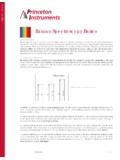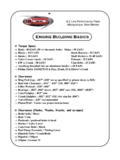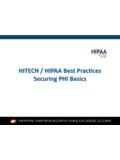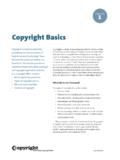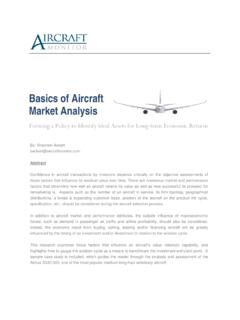Transcription of Cleanroom Basics - CERHB
1 UFControlling the environmentCleanroom Basics UFWhat is a Cleanroom ?ISO 14644-1: 'A room in which the concentration of airborne particles is controlled, and which is constructed and used in a manner to minimise the introduction, generation, and retentionof particles & microbes inside the room and in which other relevant parameters, temperature, humidity, and pressure, are controlled as necessary.' UFWho sbeing protected from What?Center of Excellence for Regenerative Health Biotechnology UFProtecting the ProductThe quality of biopharmaceuticals depends on the absence of contamination from beginning to end of the production influenza virusReplicate in cellsMany virus particlesExtensive PurificationInfluenzaVaccine UFContamination Control Environmental Control Atmospheric Materials and supplies Entrance and exit Cleaning and maintenance Personnel Control Activity Personal Hygiene Gowning UFHow Clean? Cleanrooms are classified according to the degree of cleanliness required of the manufacturing step.
2 Upon receiving a classification, the room must be maintained to meet the specifications for: Cleanliness Temperature Humidity Pressure Number of air changes/hr. Flow rate (CFM) UFClassification of CleanroomsISO 16644-1 Air Cleanliness Classes for Cleanrooms and Clean ZonesISO Classification # SI English (Former FED-STD-209E)ISO Class 3M 1,51 ISO Class 4M 2,510 ISO Class 5M 3,5100 ISO Class 6M 4,51,000 ISO Class 7M 5,510,000 ISO Class 8M 6,5100,000*The required standard of cleanliness of a room is dependent on the task performed in it; the more susceptible the product is to contamination the better the standard. UFSources of Contamination Facilities: walls, floors, ceilings, paint, coatings, construction material (sheet rock, saw dust etc.), air conditioning debris Equipment/Supplies: Particles from friction and wear, lubricants & emissions, vibrations, brooms, mops, items brought into Cleanroom , Cleanroom debris People: Skin flakes and oil, hair, spittle, cosmetics & perfume, clothing debris (lint, fibers, etc.)
3 UFPotential Contaminates Microorganisms Viruses, bacteria, fungus Particles Clothing fibers, equipment, paint UFControlling Contamination:Air Quality Filtration Pre-filtered in air handling units HEPA (High Efficiency Particulate Air) filtered prior to entering Cleanroom . Removes of particles (typically ). Air is not recycled Temperature Maintained to reduce microbial growth (viruses, spores, fungi, bacteria) Humidity Effects static, and growth of microbesEmployeeComfortClass 10,000 Specifications: Temperature 72 +/- , Humidy 45+/- 5% UFLaminar FlowAir flows with uniform velocity in parallel layers, with no disruption between the layers. HEPA FiltersAir extracted throughvents low on UFWhy Laminar Flow? Non-turbulent air flow, reduces the possibility of contamination caused by the movement of particles Scrubs the room with air flowing from ceiling to floor UFAir Change The solution is dilution Air Change A volume of air equivalent to the room volume that enters and exits a example: 60 air changes an hour means that a volume of air equivalent to the room passes through the room each minute.
4 *FDA guidelines only specify a minimum of 20 air changes per hour. The number of air changes required to meet specification is determined for each individual Cleanroom . UFCleanroom Architecture Elimination of spaces and crevasses that trap particles: Recessed lighting and vents Coved floor Covered light switches Specialized furniture (wheels, low particle emitting, stainless steel) Epoxy paint on walls and floors UFCLEANROOM ARCHITECTURE Maintained at a positive air pressure Indicated by pressure gauge or indicator Forces air to travel only OUT of the Cleanroom , preventing dirty outside air from coming of Excellence for Regenerative Health Biotechnology UFNested ZonesSterile FiltrationNote: Product outflow not shown UFCLEANROOM ARCHITECTURE Interlocking door system Door to dirtier area must be closed before door to clean area can be opened. Personnel must come in and out of the cleanroomthrough the gowning room.
5 Buffer zone. An open, non-air locked door can add billions of particles per cubic ft UFHUMANS IN CLEANROOMS(The biggest source of contamination)PEOPLE ACTIVITYPARTICLES/MINUTE ( microns and larger)Motionless (Standing or Seated)100,000 Walking about 2 mph5,000,000 Walking about mph7,000,000 Walking about 5 mph10,000,000 Horseplay100,000,000 UFMust Gown-In prior to entering Cleanroom UFMinimum Gowning RequirementsISO Class 8 ISO Class 7 ISO Class 6 ISO Class 5 ISO Class 4 Hair CoverxxxxxHoodxxBeard CoverxxxxxFace MaskxxxxFrockxxCoverallxxxShoe CoversxxxxxBootsxx UFEntering the CleanroomBenchSterile HoodClass 100 Sterile HoodClass 100 Dirty sideClean sideClassroomcleanroomGowning roomInterlockingDoorTackyMat UFGeneral Cleanroom Regulations No personal items such as jewelry, keys, watches, matches, lighters and cigarettes No eating, smoking or gum chewing No cosmetics such as lipstick, eye shadow, eyebrow pencil, mascara, eye liner, false eye lashes, fingernail polish, hair spray, mousse, or the heavy use of aerosols, after shaves and perfumes.
6 Approved skin lotions are sometimes allowed to reduce skin flaking. UFActions Prohibited in Cleanrooms Fast motions such as running, walking fast or horseplay. Sitting or leaning on equipment or work surfaces. Writing on equipment or garments. Removal of items from beneath the cleanroomgarments. Wearing torn or soiled garments. Allowing hands to touch anything other than product-related work UFMinimizing particles Only approved Cleanroom paper. Only approved ball point pens for writing Use of paper or fabric towels are prohibited -Two surfaces rubbing generates billions of particles per cubic should be specialized for Cleanroom use (brushless centrifuges) UFCleaning the Cleanroom Cleaning is the essential element of contamination control. Disinfectants filtered Mops/Buckets autoclaved Disinfectants rotated every two weeks Only Cleanroom approved wipers allowed Clean top to bottom, cleanest area to dirtiest UFClean?
7 When can the Cleanroom be cleaned? Need to work around production schedule How frequently does it need to be cleaned? Depends on use What is clean and how is it measured? UFThis material is based upon work supported by the National Science Foundation under Grant No. opinions, findings, and conclusions or recommendations expressed in this material are those of the author(s) and do not necessarily reflect the views of the National Science Foundation.
